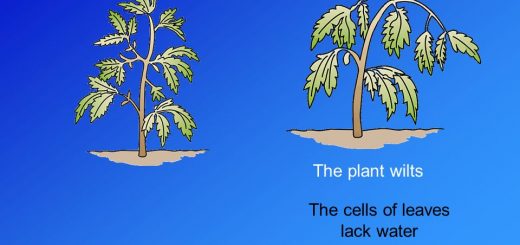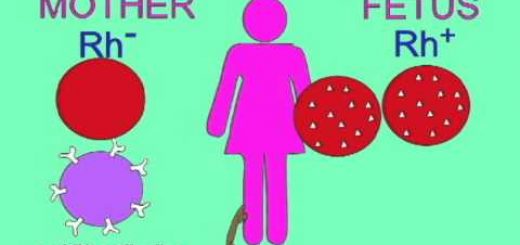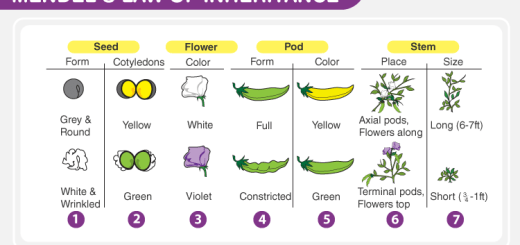Packaging of DNA, Genome, chromosomal proteins, DNA in Prokaryotes and Eukaryotes
Prokaryotes are living organisms whose genetic material is not surrounded by a nuclear membrane, but found free in the cytoplasm such as bacteria, DNA molecules of mitochondria and chloroplasts (organelles of eukaryotic cells) are very similar to those of prokaryotes, Plasmids are found in the yeast cells (from eukaryotes).
DNA in Prokaryotes
DNA of Escherichia coli bacterium as an example of prokaryotes:
- DNA exists as a double helix with its ends joined to each other to form a circle.
- If DNA was stretched out in a straight line, it would be about 1.4 millimeters in length, whereas the cell itself is only about 2 micron in length.
- DNA is folded many times and occupied a nuclear area about 0.1 of the cell’s volume.
- DNA molecule is attached to the plasma membrane at one point or more.
Some bacteria contain one or several additional, much smaller and circular DNA molecules which are called “plasmids”, Plasmids are much smaller circular DNA molecules and not complexed with proteins.
Importance of plasmids: Plasmids are widely used in the field of genetic engineering, where the bacterial cell replicates any plasmid inside it during the replication of its main DNA and the scientists take advantage of this activity by introducing artificial plasmids into the bacterial cells, to obtain several copies of them.
DNA in Eukaryotes
Eukaryotes are living organisms whose genetic material is surrounded by a nuclear membrane that separates it from the cytoplasm and DNA is organized into several chromosomes, The human’s somatic cell contains 46 chromosomes, Chromosomes appear in eukaryotic cells during the cell division.
Structure of chromosomes
Each chromosome contains a single DNA molecule, extending from one end of the chromosome to the other end, DNA molecule is coiled and folded many times and associated with various proteins, forming a “chromatin” which contains roughly equal amounts of DNA and proteins.
Chromatin is one molecule of DNA that is coiled and folded many times and associated with proteins, The chromosomal proteins are divided into Histone proteins and Non-histone proteins.
Histone proteins
Histones are a well-defined group of small structural proteins, where they have a high content of the basic amino acids “arginine” and “lysine” and are present in great amounts in the chromatin of any cell.
At the normal pH of the cell, the amino acids “arginine” and “lysine” have positively charged alkyl groups (R), So, they bind strongly to the negatively charged phosphate groups of DNA molecules, Histones proteins are responsible for shortening the DNA molecule tenfold by forming a string of nucleosomes.
Non-histone proteins
Non-histones are heterogeneous groups of structural and regulatory proteins with many functions found in the structure of chromatin and they present in a little amount, Non-histone proteins have many different functions because they contain :
- Structural proteins enter in the structure of some definite parts of DNA molecule and play the main role in the spatial organization of DNA within the nucleus as they are responsible for shortening DNA about 100,000 times by forming the packed chromatin.
- Regulatory proteins determine whether the DNA code will be used in making RNA, proteins and enzymes or not.
Packaging of DNA
If we imagine that DNA double helix of each chromosome was lined up and stretched out, it would be about 2 metres in length, The histones and other proteins are responsible for packing this long molecule into the cell’s nucleus that of 2 : 3 micron in diameter.
Steps of DNA packaging
Biochemical analysis and electron micrographs have shown that DNA is packed, as follows:
- DNA is wounded around clusters of histones, forming a string of particles that is called “nucleosomes”, this shortens the molecule about tenfold, but it must be packed about 100,000 times more tightly to fit into the nucleus.
- The string of nucleosomes is coiled to pack the nucleosomes together, However, even this is not sufficient to shorten the DNA molecule to the required length.
- The tightly coiled strings of nucleosomes are arranged in large loops that are held together by the structural non-histone proteins to form the chromatin, Chromatin is packed up as tightly as possible to be condensed into the chromosome.
Nucleosomes are a string of particles that are found in the chromosomes and consist of DNA molecule wounded (wrapped) around clusters of histones to shorten the DNA molecule about tenfold.
When DNA is packed as chromatin, replication enzymes apparently can’t reach it, This packaging must be unwounded at least into a string of nucleosomes before DNA can serve as a template for DNA or RNA synthesis.
Structure of the genome
In 1977, researchers found methods that can be used for determining the sequence of nucleotides in DNA and RNA molecules, This provided the tools to describe precisely how genes are arranged within the cell’s DNA molecule, Genome is the total of all genes ( all DNA) found in the cell.
DNA contains genes that carry instructions to construct the :
- The sequence of nucleotides that is responsible for making proteins.
- The sequence of nucleotides that transcribes the ribosomal RNA (rRNA) which enters the building of ribosomes.
- The sequence of nucleotides that transcribes the transfer RNA (tRNA) which carries the amino acids during protein synthesis.
The genes in prokaryotes are the genes that are responsible for RNA and protein synthesis and represent most of the genome.
The genes in eukaryotes: less than 70% of the genome serve the function of RNA and protein synthesis and the rest of the genome is unaccounted ( has unknown function).
Repetitive DNA
Most genes are present in only one or few copies in the genome, such as:
Genes needed to synthesize the ribosomal RNA and histones that the cell needs in large amounts, where they are reasonable to suppose that having multiple copies of these genes to speed up the cell’s production of new ribosomes and histones, So, there are many -often hundreds- of copies of the genes in all the eukaryotic cells.
Some nucleotides sequences of DNA have been repeated many times, The role of most of this repetitive DNA is still unclear, For instance, in the fruit fly (Drosophila), the brief nucleotides sequence (A-G-A-A-G) is repeated about 100,000 times in the middle of one chromosome, This and many other repeated sequences are noncoding DNA.
Other noncoding DNA
The satellite DNA of some chromosomes is noncoding, Eukaryotic genomes contain a great deal of other noncoding DNA, where the geneticists observe that the amount of DNA in species’ genome bears little relationship to the complexity of the organism or the number of proteins that is produced by it, Little amount of DNA of the plants and animals codes for protein synthesis.
Example: The largest known genome belongs to the salamander, its cells contain about 30 times the amount of DNA found in the human cells, although they produce fewer proteins, this is due to the noncoding of a large amount of DNA.
Functions of noncoding DNA:
- Perhaps some of the noncoding DNA acts to keep the chromosomes structure.
- Some regions of DNA are references to the places at which the messenger RNA (mRNA) synthesis should start and these regions are important in protein synthesis.
We can compare between prokaryotic DNA and eukaryotic DNA, as follows:
Prokaryotic DNA
It exists as a double helix, its ends are joined together, it is attached to the plasma membrane at one point or more and it is not organized in the form of chromosomes, It is found in the cytoplasm (not surrounded by the nuclear membrane), It is not complexed with proteins.
The most are coding, It starts from the attachment point with the plasma membrane, Plasmids present and not complexed with proteins, Most of them are responsible for making the RNA and proteins.
Eukaryotic DNA
Eukaryotic DNA exists as a double helix, its ends are free and it is organized in several chromosomes, It is found in the nucleus (surrounded by the nuclear membrane), It is complexed with histone and non-histone proteins.
Some are non-coding, It starts at any point along the DNA molecule, Plasmids present in the yeast only, Less than 70% serve the function of RNA and protein synthesis and the rest of the genome is unaccounted (has unknown function).
Structure of Nucleic Acid (DNA), Enzymes, DNA replication and DNA repair mechanism
Molecular technology (Genetic Engineering) advantages, Techniques and uses
DNA, Ribonucleic acids (RNAs), protein synthesis and types
Regulation of the cell cycle, DNA synthesis phase, Interphase & Mitosis
Importance of Nucleosides, Nucleotides, Purines, Pyrimidines & Sugars of nucleic acids



